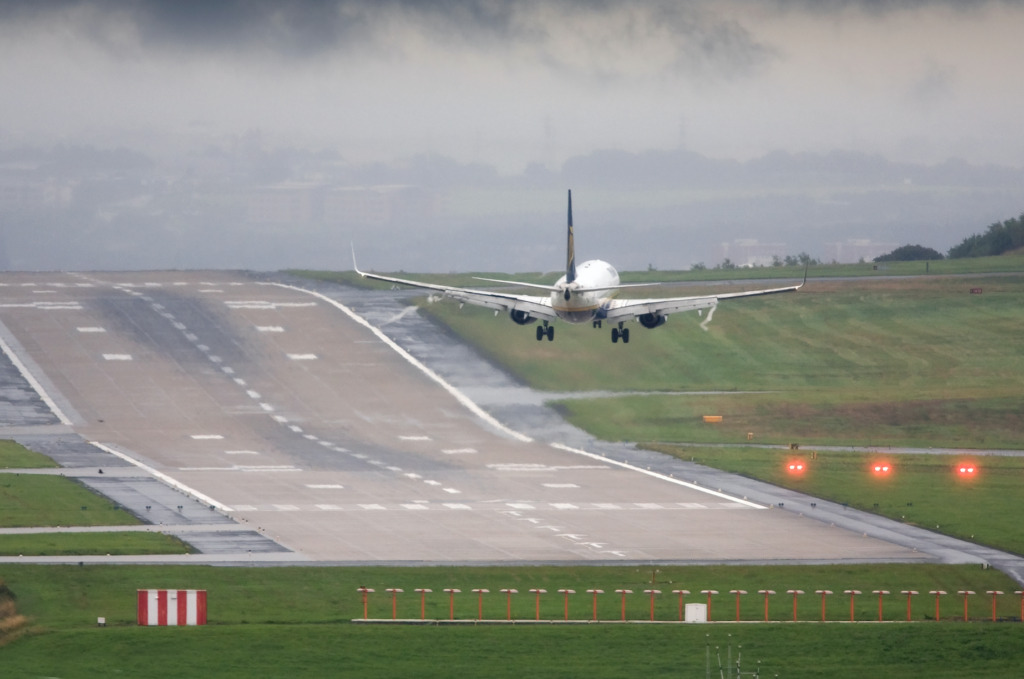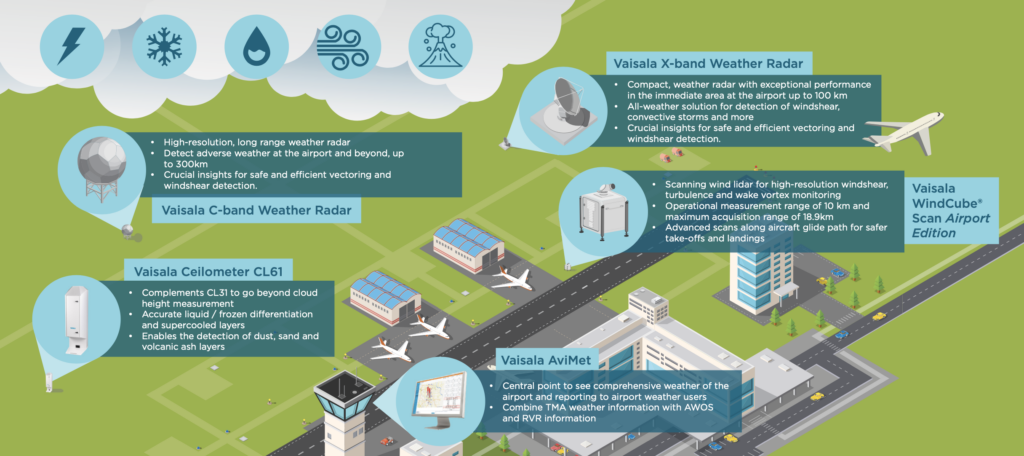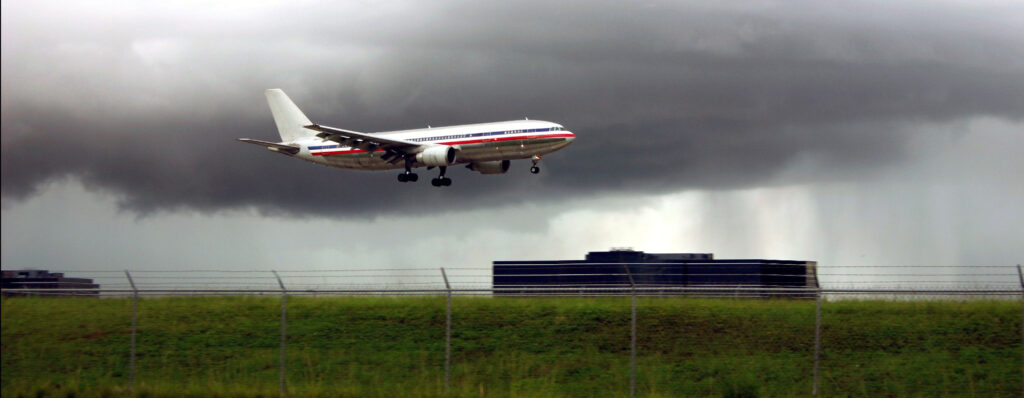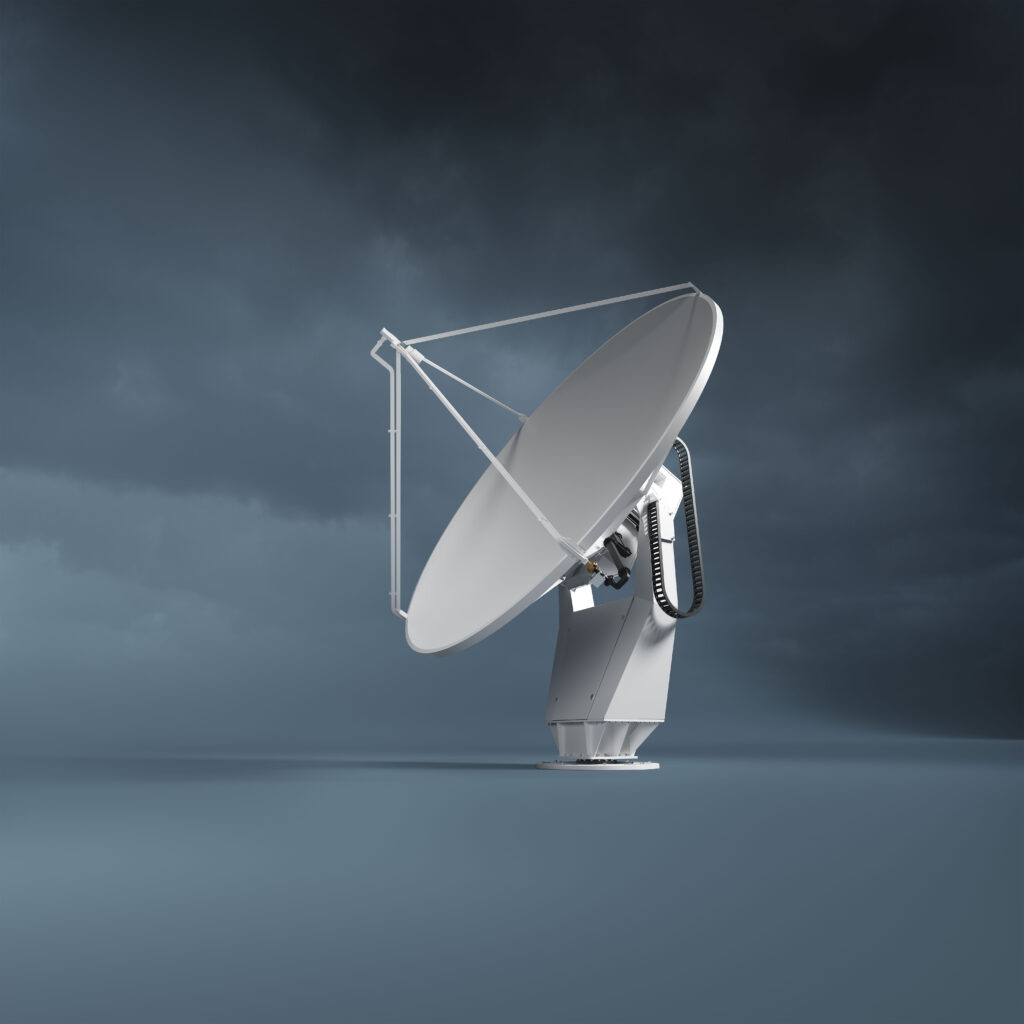Improving Efficiency for Airlines with Weather Sensing Technology


Aleksis Kajava of Vaisala highlights the importance of monitoring weather conditions in the Terminal Maneuvering Area (TMA). Pictured above is a plane landing in a crosswind at Leeds Airport. (Photo credit: Chris Procter)
Efficiency and safety are paramount in the fast-paced world of aviation. Weather conditions play a crucial role in flight operations, often causing delays, rerouting, and increased fuel consumption. To address these challenges, Vaisala, a leader in weather awareness technology, is harnessing the power of remote sensing to enhance weather observations and build a more sustainable future for aviation.
The Terminal Maneuvering Area (TMA) is the busiest part of flight operations, where weather-related incidents and delays frequently occur. While regulatory Automated Weather Observing Systems (AWOS) cover the airport area, they do not extend to the TMA, leaving critical gaps in weather awareness. These gaps can result in suboptimal flight approaches or departures, landing difficulties, and increased emissions.
Vaisala’s approach goes beyond airport boundaries by utilizing various remote sensing technologies, including radar, wind LiDAR, lightning detection, and decision support software. This combination enables total weather awareness and high-resolution nowcasting in the TMA, enabling safety and efficiency. These advancements are particularly significant in an industry grappling with environmental concerns.
In a recent interview with Avionics International, Aleksis Kajava, Sales Director of Weather and Environment for Europe and Latin America at Vaisala, emphasized the importance of enhancing weather observations in the TMA. The company’s state-of-the-art remote sensing equipment enables monitoring of storms, lightning, precipitation, winds, icing, and various severe weather conditions not only at the airport but also around it. By providing such comprehensive data, Vaisala’s solutions benefit airlines such as Saudia by improving flight safety and efficiency, ultimately contributing to the sustainability of aviation.

Aleksis Kajava, Sales Director, Weather and Environment, Europe and Latin America (Vaisala)
“At the end of the day, it’s about the end user, but of course, the air traffic controller is the intermediary there,” Kajava remarked.
Fuel efficiency is a critical aspect of sustainability in aviation. Accurate weather information in the TMA allows aircraft to avoid adverse weather conditions such as turbulence and storms, which might necessitate deviations from flight plans. By equipping airlines and air traffic control with precise information, unnecessary fuel burn due to rerouting to alternative airports can be prevented. Similarly, avoiding long delays in departure reduces fuel consumption. Safety is another vital factor—making the right decisions, such as rerouting or holding aircraft, helps prevent accidents and equipment damage. By enhancing safety, Vaisala’s technology contributes to overall sustainability in the aviation industry.

“Radar, lidar, lightning detection, and decision support software combine for total weather awareness and high-resolution nowcasting.” (Vaisala)
“You may be able to avoid directing flights to holding patterns and burning fuel while in the holding or circling pattern,” said Kajava. “Sometimes you need to make tough decisions like putting the aircraft in a holding pattern or asking the pilot to do another landing to ensure the safety of the flight.”
Noise reduction is an additional benefit derived from accurate weather information. Temperature inversions, wind patterns, and other conditions impact aircraft noise levels. By optimizing runway selection and flight paths based on precise weather data, Vaisala’s technology allows customers to minimize the noise impact on nearby communities, thereby mitigating noise pollution.

(Photo: Shutterstock / Samuel Acosta)
Regarding recent technological advancements, Kajava highlighted several innovations developed by Vaisala. One is a new version of their laser-based wind measurement equipment, capable of three-dimensional wind measurements within a 10-kilometer range around the airport. The company has also introduced an enhanced weather radar specifically designed for measuring severe conditions in airport surroundings. Furthermore, a new family of ceilometers has been developed, enabling the measurement of icing conditions during approaches. Vaisala’s continuous improvements also extend to the user interface, ensuring enhanced data visualization.
Recently launched, Vaisala’s humidity profiler measures the humidity of the atmosphere, which significantly improves short-term weather forecasting around airports. While the humidity profile itself may not be highly relevant, Kajava explained that the enhanced short-term forecasts resulting from this technology significantly benefit thunderstorm weather forecasting. Vaisala collaborates with specialized partners in aviation weather forecasting to explore new tools and applications that leverage this equipment for more precise short-term forecasts.

The newest addition to Vaisala’s family of solid-state radars is the WRS300. (Photo: Vaisala)
Vaisala’s strategic priorities revolve around continuous technology improvement for monitoring weather using remote sensing equipment. The company works closely with internal and external stakeholders to provide operational decision-making information in the most useful format for aviation users. We are helping our customers not just to buy the technology but also to leverage it,” Kajava added.
Vaisala’s equipment is deployed in over 2,000 medium and large-sized airports worldwide. With a presence in 170 countries, the company’s impact on weather monitoring is extensive. Headquartered in Finland, Vaisala has a workforce of over 2,000 employees.
While the development of advanced air mobility (AAM) aircraft like drones and air taxis is being pitched as an advancement of logistical support to move cargo and people, a project from university researchers and NASA could allow these aircraft to create more accurate weather predictions.
Researchers at Oklahoma State University have received funding from NASA to improve real-time forecasting of low-level winds and turbulence. This research project, which started in 2020, aims to ensure operational safety for drones in urban and rural environments.
—————
Boost Internet Speed–
Free Business Hosting–
Free Email Account–
Dropcatch–
Free Secure Email–
Secure Email–
Cheap VOIP Calls–
Free Hosting–
Boost Inflight Wifi–
Premium Domains–
Free Domains





